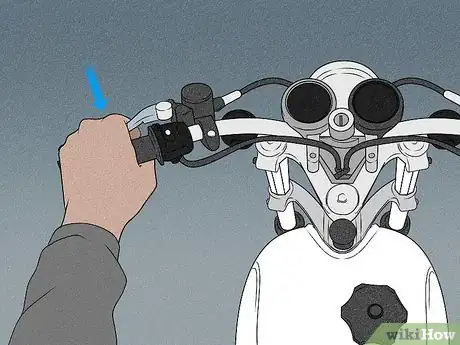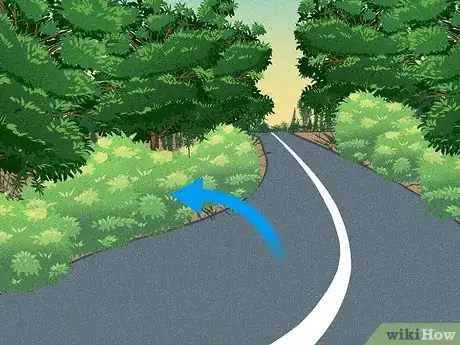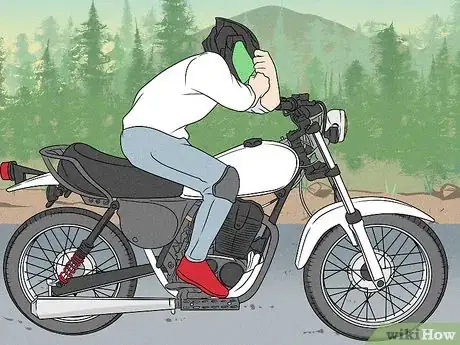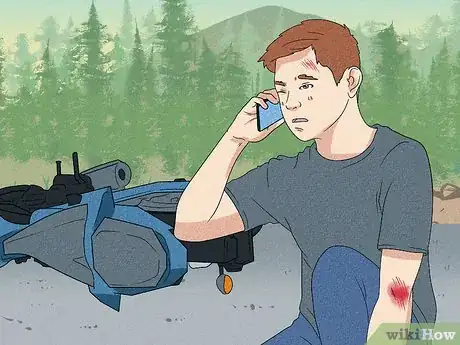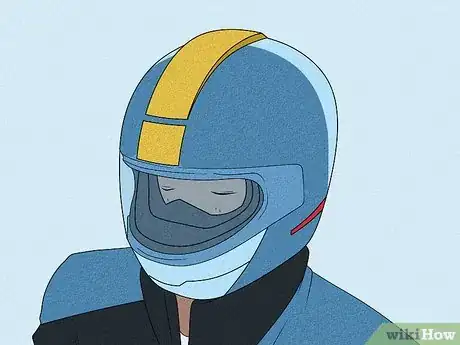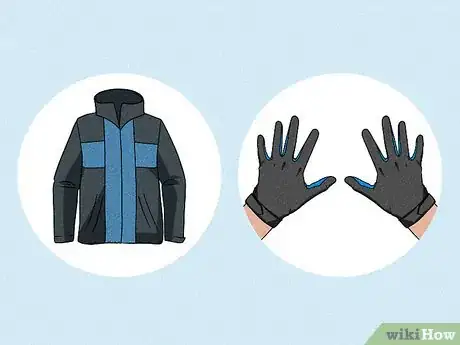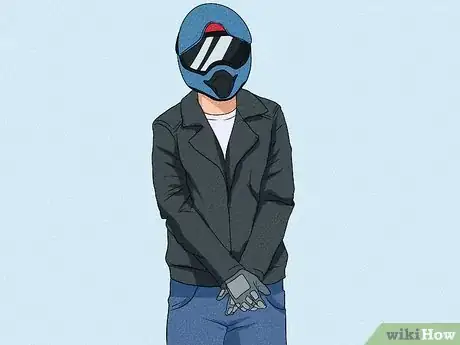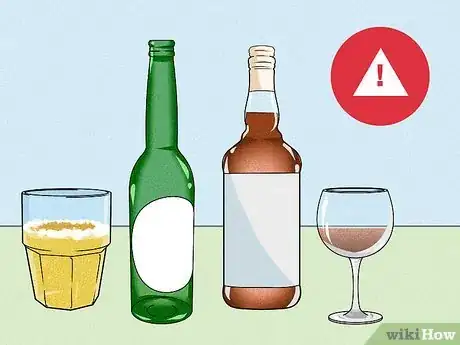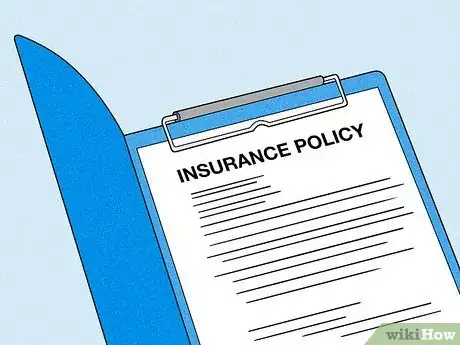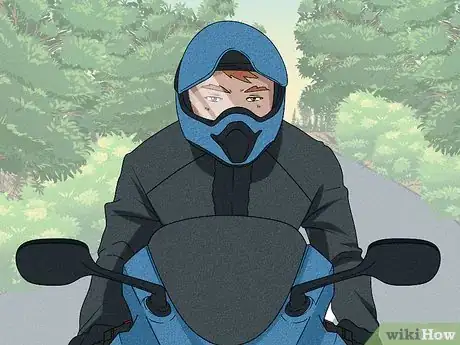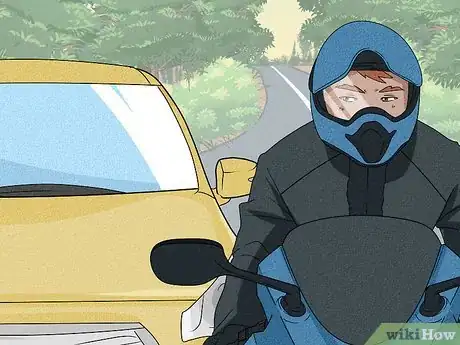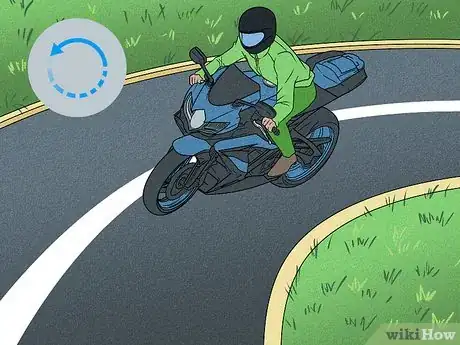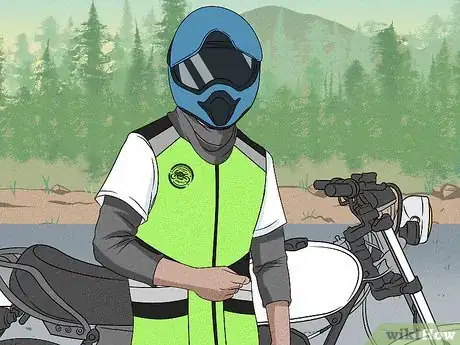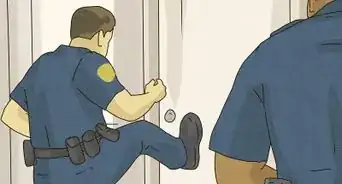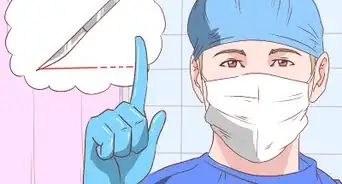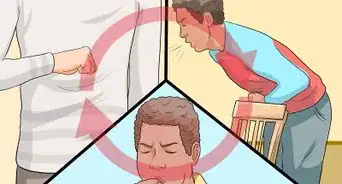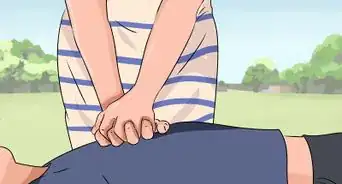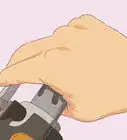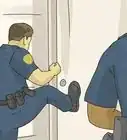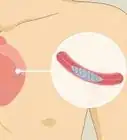This article was medically reviewed by Jonas DeMuro, MD. Dr. DeMuro is a board certified Pediatric Critical Care Surgeon in New York. He received his MD from Stony Brook University School of Medicine in 1996. He completed his fellowship in Surgical Critical Care at North Shore-Long Island Jewish Health System and was a previous American College of Surgeons (ACS) Fellow.
There are 10 references cited in this article, which can be found at the bottom of the page.
This article has been viewed 34,508 times.
Nobody wants to crash. Life would be much better if enjoying a day on your motorbike never ended with your body on the pavement. Unfortunately, we know all too well that it can. So the best courses of action are to protect your body from injury, understand what to do if accident conditions should arise, and to take steps to prevent an accident from occurring. By doing these things, you can better enjoy your time on your bike.
Steps
Colliding Well
-
1Apply your brakes. When you encounter an obstruction, you should react quickly, applying both brakes. Naturally, the front brake is the most powerful brake, so you should always lead with that one. Use the rear brake to even out the distribution of your weight. Rather than slamming on your front brake, apply pressure progressively. This will prevent you from locking your front brake.[1]
-
2Select your crash point. Many times, you will have no choice in the matter. However, if you know that you are about to crash, it is worth considering the best place for impact, and aiming toward it. This is best done without your brake applied.
- For example, you never want to head into on-coming traffic.
- You also want to avoid hitting anything head on.
- So if you are going to make impact, try to steer so that you collide sideways instead.
Advertisement -
3Stay on the bike. The truth is, you should almost never bail. You should likewise avoid laying the bike down. You will do best at surviving an accident if you stay connected to your machine. If you exit the vehicle, you may slide for a long distance, possibly in the direction of oncoming cars. You could even end up hurting an innocent bystander.
-
4Slide well. In the event of a slide, you need to stay relaxed. Although it will be difficult, you’ve got to loosen your muscles and let it happen. If you can stay loose and calm, you will sustain fewer injuries. Simply concentrate on keeping your face off the pavement.
-
5Prepare your body to roll. If an impact is not avoidable, then you will need to do what you can to protect your body from serious injury. One way of minimizing injury is to use the tuck and roll method.[2] Or, you can also use a controlled roll.
- A tuck and roll might be helpful if you see crash coming while you are still on your bike. To get into a tucked position, pull your knees into your chest, cross your arms over your chest, and tuck your head down towards your chest. Then, try to relax and roll as you crash.
- A controlled roll is best after a slide or if you come off of your bike close to the ground. For a controlled roll, place your arms above your head and keep your legs straight. Then, allow your body to roll until it stops on its own.
- Keep in mind that you should not use the tuck and roll or controlled roll unless you have no other options. If you have no other choice but to crash, then getting into this position should not be to difficult.
-
6Manage the accident. Once the dust settles, hopefully you will be able to stand up and brush yourself off. Now you must call the police and exchange information with the other driver. Use your phone to take a photograph of the other driver’s insurance card (both sides), and allow them to do the same with yours. Call the local police and wait for them to arrive. They will have questions for you and may issue one or both of you a ticket.
- If you are seriously injured, ask someone to call emergency services and get into an ambulance.
- If you do not have the ability to take a photograph, simply write down the info from their insurance card.
- Stay calm, even if it was the other driver’s fault. Yelling and getting upset will not help anything.
Protecting Yourself
-
1Wear a helmet. Wearing a high-quality motorcycle helmet is the number one way to protect yourself and ultimately survive a motorbike crash. Be sure that your helmet is in good condition, without cracks. Additionally, many states have helmet laws making it illegal to ride without one.[3]
-
2Choose the right gear. Not all motorcycle gear is created equal. Maximize your safety during a collision by wearing the best gear. For example, gloves with built-in palm sliders are the most effective way to keep your wrists safe during a collision. Leather jackets with elbow armor can further protect your arms. Do some research and find the best gear for your terrain. [4]
-
3Wear your gear. Any gear is better than no gear. At a bare minimum, wear heavy-duty pants, boots, gloves, and a jacket. Wear some form of eyewear, like sunglasses. No matter what, you should always wear a helmet.[5]
-
4Stay sober. Even below the legal limit, studies have shown that any amount of alcohol in your system can impair your reaction time. When riding a motorcycle, this risk is far too great. A fraction of a second can mean the difference between life and death. If you have plans to mount your machine, refrain from drinking even one beer.
-
5Obtain health insurance. Surviving a motorbike crash involves economic survival, as well. If you get into a serious collision, your medical bills could be considerable. If you are going to ride a motorcycle, it is responsible and smart to obtain high-quality medical insurance. This way, if you should get hurt, you will be able to receive the best medical treatment without bankrupting the rest of your life.[6]
Preventing a Crash
-
1Slow down. Many accidents would be prevented in the cyclist was riding a bit slower. A good rule of thumb is to only ride as fast as you can see. Meaning, you should always be able to bring the bike to a safe and complete stop in the unobstructed distance you can see ahead. If you suspect you may be going too fast, you’re going too fast.[7]
-
2Stay focused. When you’re on your bike, this is not the best time to be worrying about your marriage troubles, you workplace woes, or your health problems. Instead, take in the experience, stay present, and relax. Remain alert and aware of your surroundings.[8]
- Avoid texting while riding your motorcycle as well. Texting while operating a vehicle makes you 23 times more likely to get into an accident![9]
-
3Stay defensive. It is a sad (but true) reality that many automobile drivers will not see you on your bike. Cars will pull out in front of you, cut you off, and worst of all, make left turns in front of you. Be a defensive driver on your bike! Be both wary and aware of those around you, and try to be prepared for the worst.[10]
-
4Take corners correctly. Many accidents are the result of riders failing to negotiate a curve properly. Often this occurs when a rider enters a corner too quickly. The best method is to slow to a safe speed as you enter a turn, and then gradually accelerate when you are positive it is safe to do so.[11]
-
5Stay visible. You are less likely to collide with another vehicle, if you are certain they can see you. Wearing bright colors, maintaining an appropriate lane position, and being aware of shadows can all help to prevent a nasty wreck.[12]
- Use effective lane positioning.
- Loud pipes save lives.
- When the sun is behind you, you may be driving in your own shadow. This can be a particularly dangerous time for visibility.
Things You'll Need
- A motorbike helmet, preferably white or brightly colored, that complies with the regulations.
- Other motorbike safety gear.
- High-visibility clothing.
- A petrol-powered motorbike.
- Motorcycle insurance.
- Medical insurance.
References
- ↑ https://roadguardians.org/motorcycle-braking/
- ↑ http://www.corfman.com/russell/cycling/crashtechnique.html
- ↑ http://saferoads.org/issues/motorcycle-helmets/
- ↑ https://rideapart.com/articles/10-things-ive-learned-10-motorcycle-crashes
- ↑ http://indefinitelywild.gizmodo.com/how-to-not-crash-a-motorcycle-and-what-will-keep-you-a-1586106433
- ↑ http://www.cycleworld.com/2014/12/25/motorcycle-advice-from-surviving-a-200-mph-crash-ride-smart-tips/
- ↑ http://indefinitelywild.gizmodo.com/how-to-not-crash-a-motorcycle-and-what-will-keep-you-a-1586106433
- ↑ http://pirateslair.net/SAFETY1.htm
- ↑ https://www.fcc.gov/consumers/guides/dangers-texting-while-driving
- ↑ http://www.bikesafer.com/ultradefensive.html
- ↑ http://www.ridinginthezone.com/the-top-2-survival-tips-that-will-save-your-life/
- ↑ http://www.ridinginthezone.com/the-top-2-survival-tips-that-will-save-your-life/
- ↑ https://rideapart.com/articles/10-things-ive-learned-10-motorcycle-crashes
- ↑ https://rideapart.com/articles/10-things-ive-learned-10-motorcycle-crashes
About This Article
To survive an impending motorbike crash, steer your bike away from traffic or anything you might hit head on, and try to collide sideways instead. You should also try to stay on your bike and keep it upright, since bailing could cause you to slide a long distance and hurt yourself or others. If you do end up sliding, however, you can protect yourself as much as possible by keeping your muscles relaxed. When impact is unavoidable and you're out of other options, tuck your head and knees toward your chest, cross your arms, and roll away from the crash. For more tips from our Medical co-author, like how to prevent a crash, keep reading!
